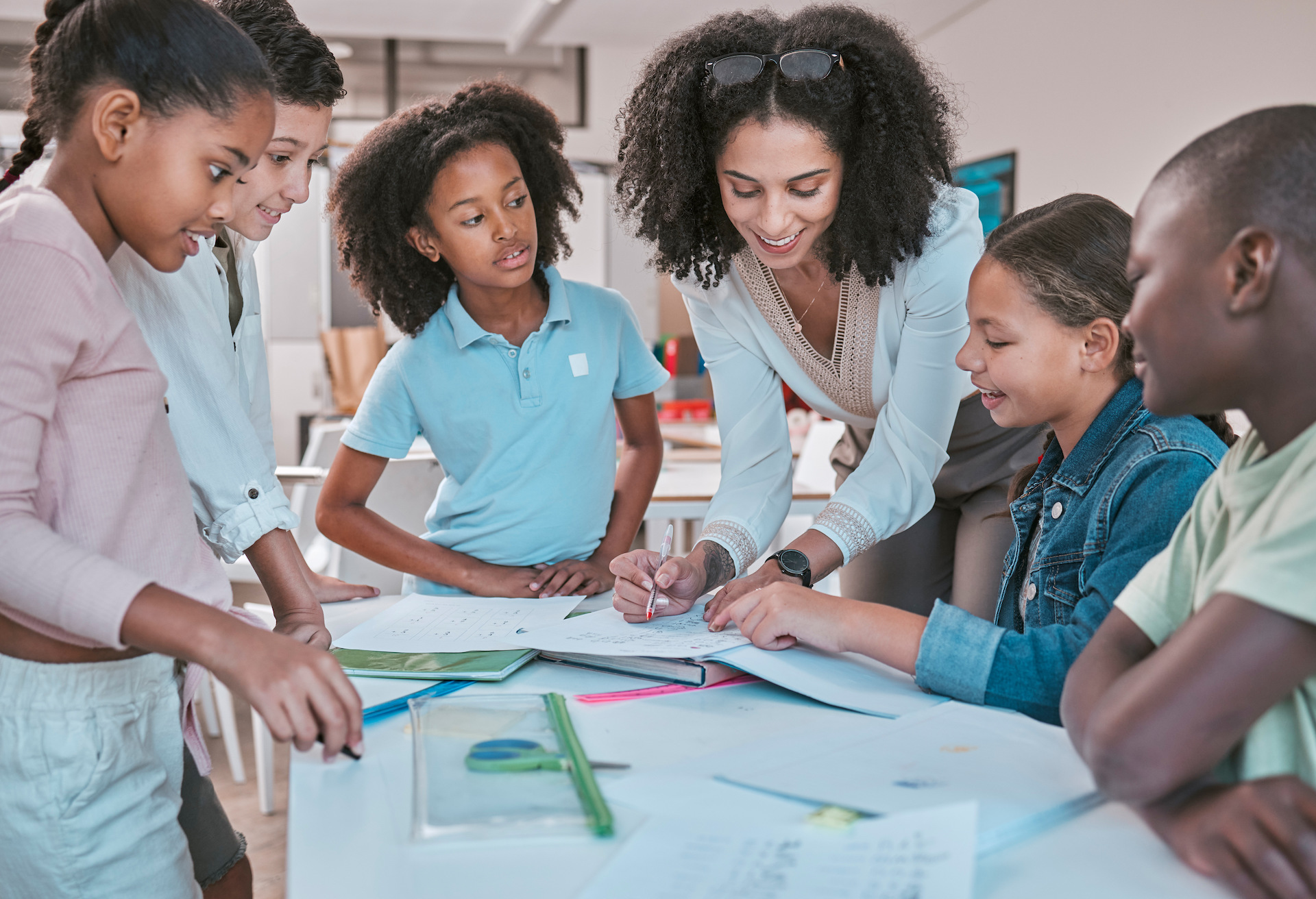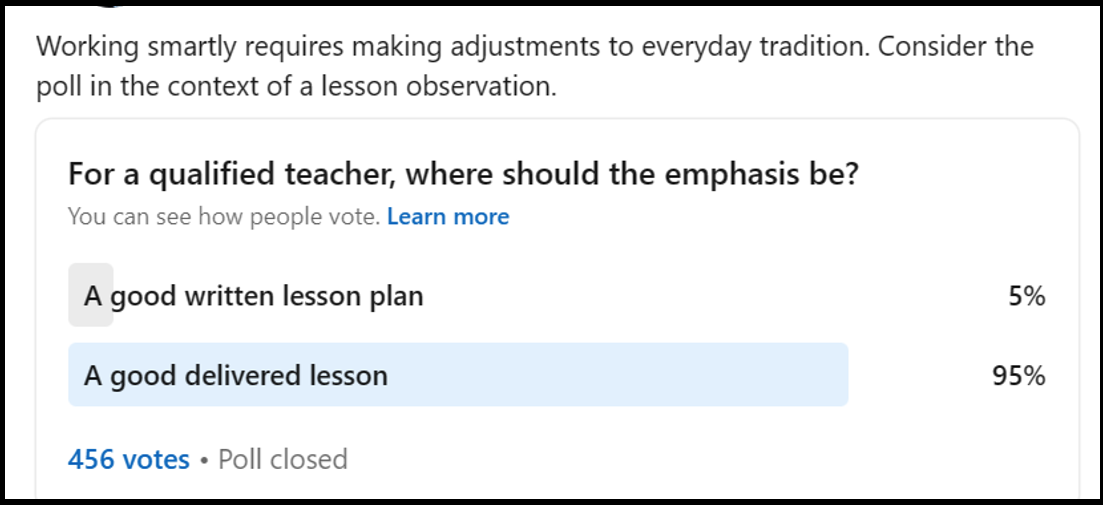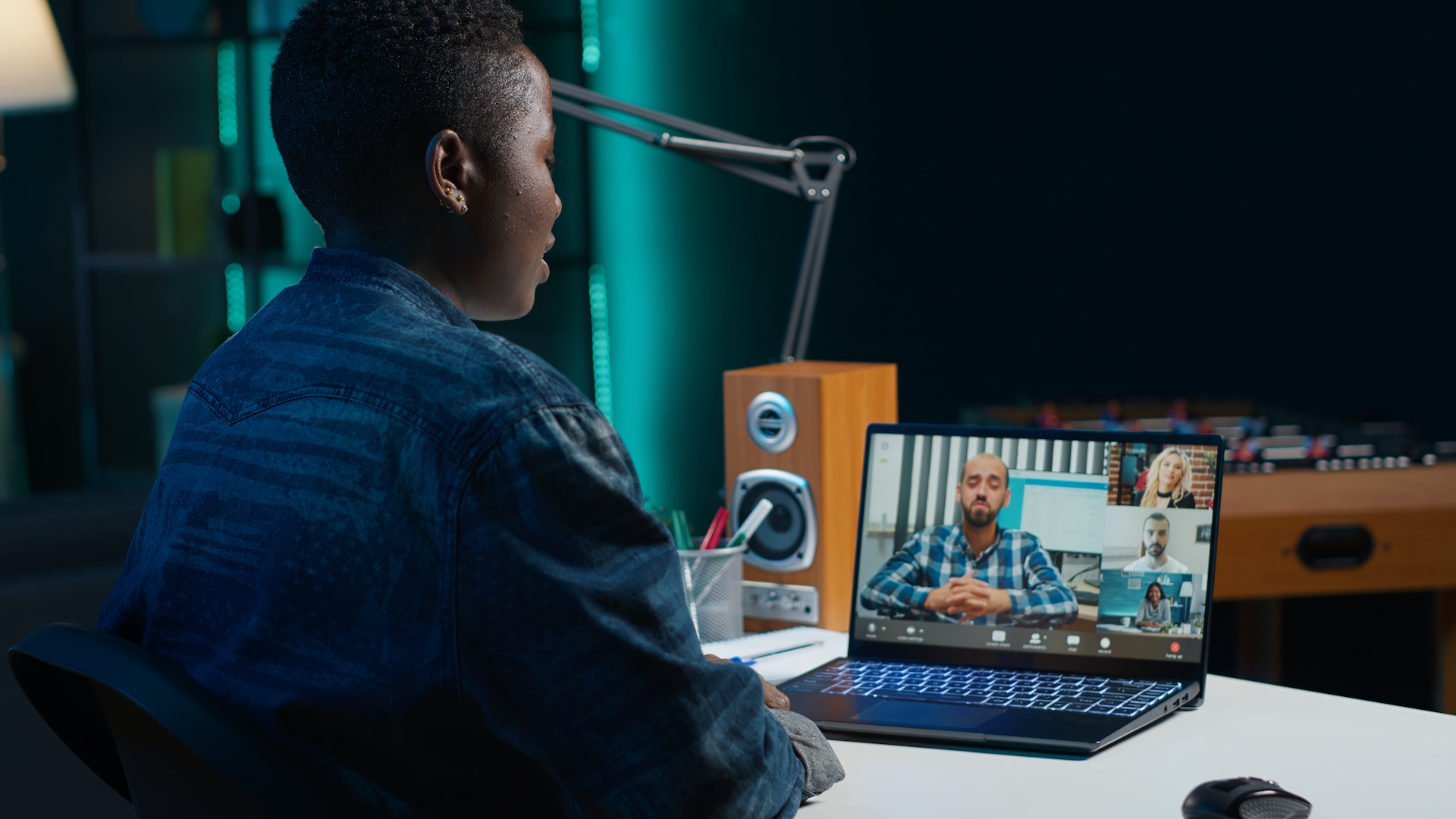Educational
Lesson Plans vs. Lesson Delivery: The 95% That Makes All the Difference
March 19, 2025
Author: Emmanuel Ajoku
In the educational sphere, the efficacy of teaching methodologies has always been a topic of intense debate. The recent poll that asked, “For a qualified teacher, where should the emphasis be?” provides a fresh perspective on this ongoing discourse. The results revealed that only 5% of the respondents (5% of 456, which is approximately 23 respondents) believed that emphasis should be placed on a good written lesson plan, whereas an overwhelming 95% (approximately 433 respondents) prioritized a good, delivered lesson. These statistics prompt an essential discussion on what truly defines effective teaching.
The case for a well-structured lesson plan cannot be entirely dismissed. The 5% who favour a good written lesson plan might argue that a well-thought-out plan serves as a roadmap for both teachers and students. It ensures that the lesson objectives are clear, the content is organized, and the instructional strategies are well-articulated. A comprehensive lesson plan also helps teachers to anticipate potential challenges and prepare accordingly. In essence, it acts as a guiding document that can enhance the coherence and flow of the lesson, providing a structured learning environment.
However, the majority’s overwhelming preference for a well-delivered lesson sheds light on a more dynamic aspect of teaching. This perspective emphasizes the importance of how the content is conveyed rather than just what is being conveyed. Effective delivery includes engaging presentations, interactive teaching methods, and the ability to adapt to students’ needs in real-time. A good delivery can make the lesson come alive, turning theoretical knowledge into practical understanding. It can foster a more engaging and interactive learning experience, which is crucial for student retention and comprehension.

The results of the poll underscore a critical aspect of contemporary education – the need for teachers to be adaptable and responsive. In today’s diverse classroom settings, a one-size-fits-all approach is rarely effective. The ability to modify instructional methods on the fly, address students’ questions, and provide instant feedback can significantly enhance the learning experience. This adaptability also allows teachers to create a more inclusive and supportive classroom environment, where all students feel valued and understood.
Moreover, the significance of teacher-student interaction cannot be overstated. A teacher’s enthusiasm, empathy, and ability to connect with students can inspire and motivate them, making learning more enjoyable and impactful. These interpersonal skills, which are critical to effective lesson delivery, often go beyond the confines of a written plan.
In conclusion, while a well-crafted lesson plan lays the foundation for effective teaching, it is the delivery that brings the lesson to life. The poll results highlight the evolving priorities in education, where the focus is increasingly on creating a dynamic and interactive learning environment. For a qualified teacher, the ability to deliver a lesson effectively is paramount, as it not only enhances student engagement but also fosters a deeper understanding of the subject matter. Thus, the real art of teaching lies in the seamless blend of preparation and delivery, ensuring that each lesson resonates with the students and leaves a lasting impact.



